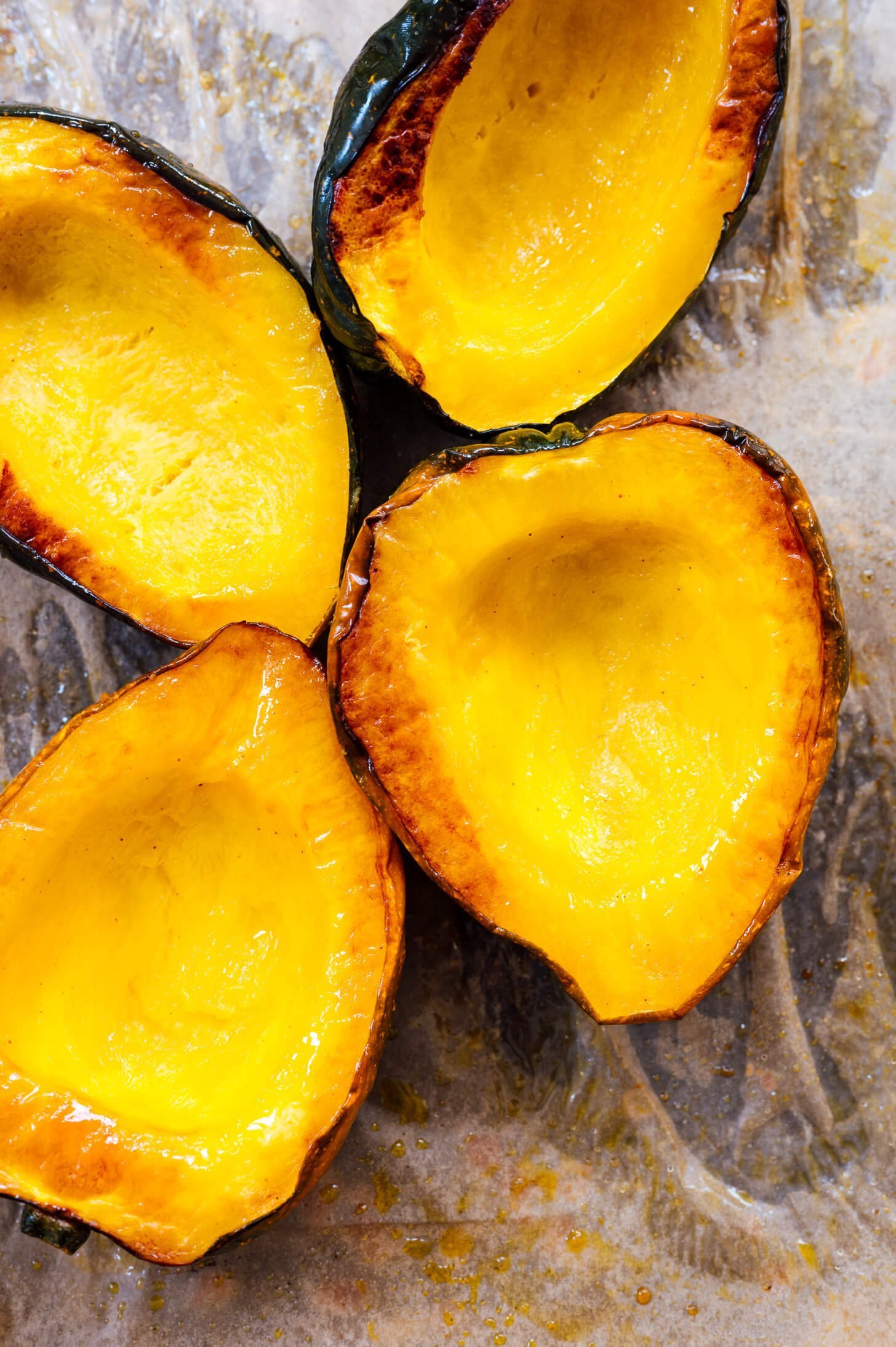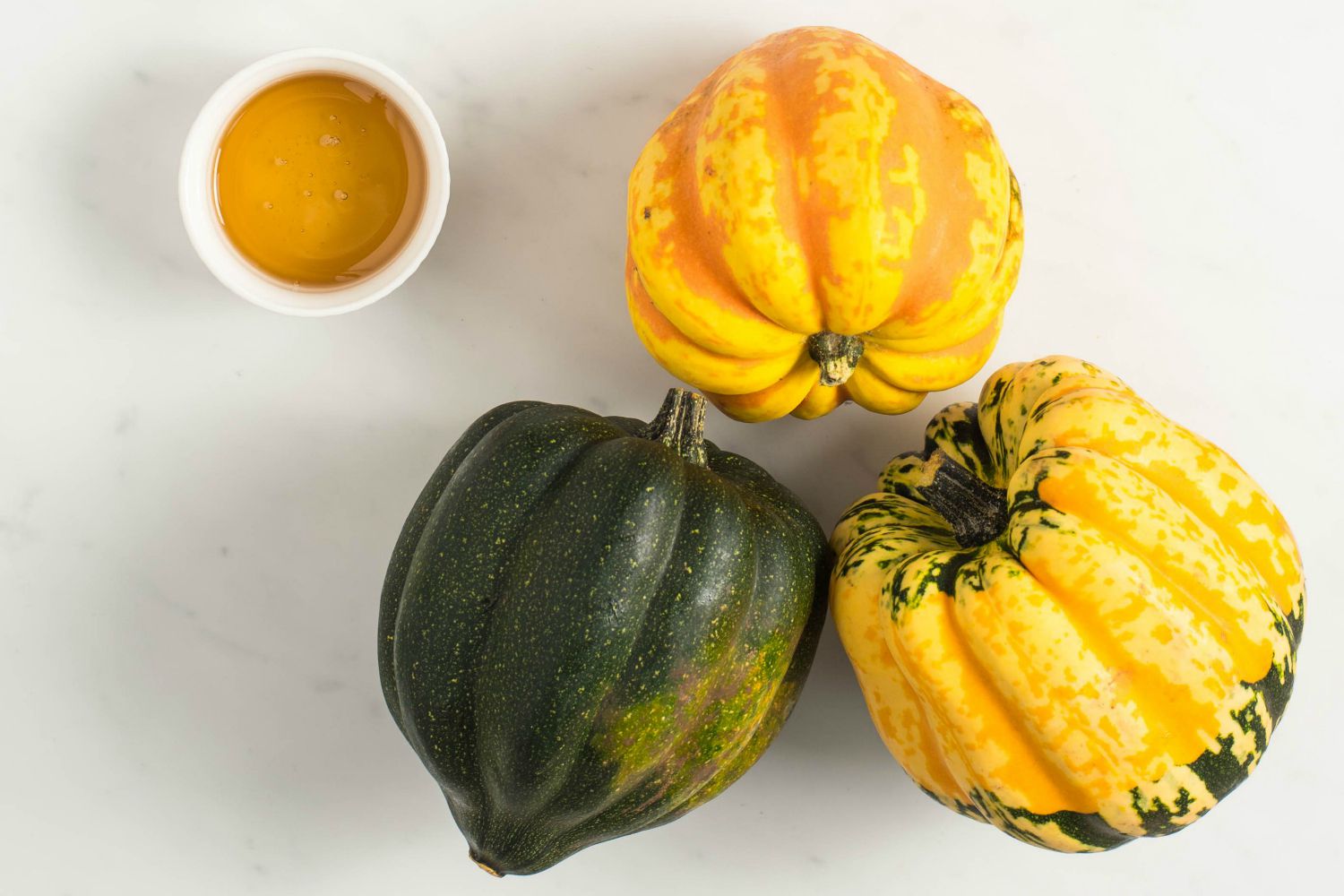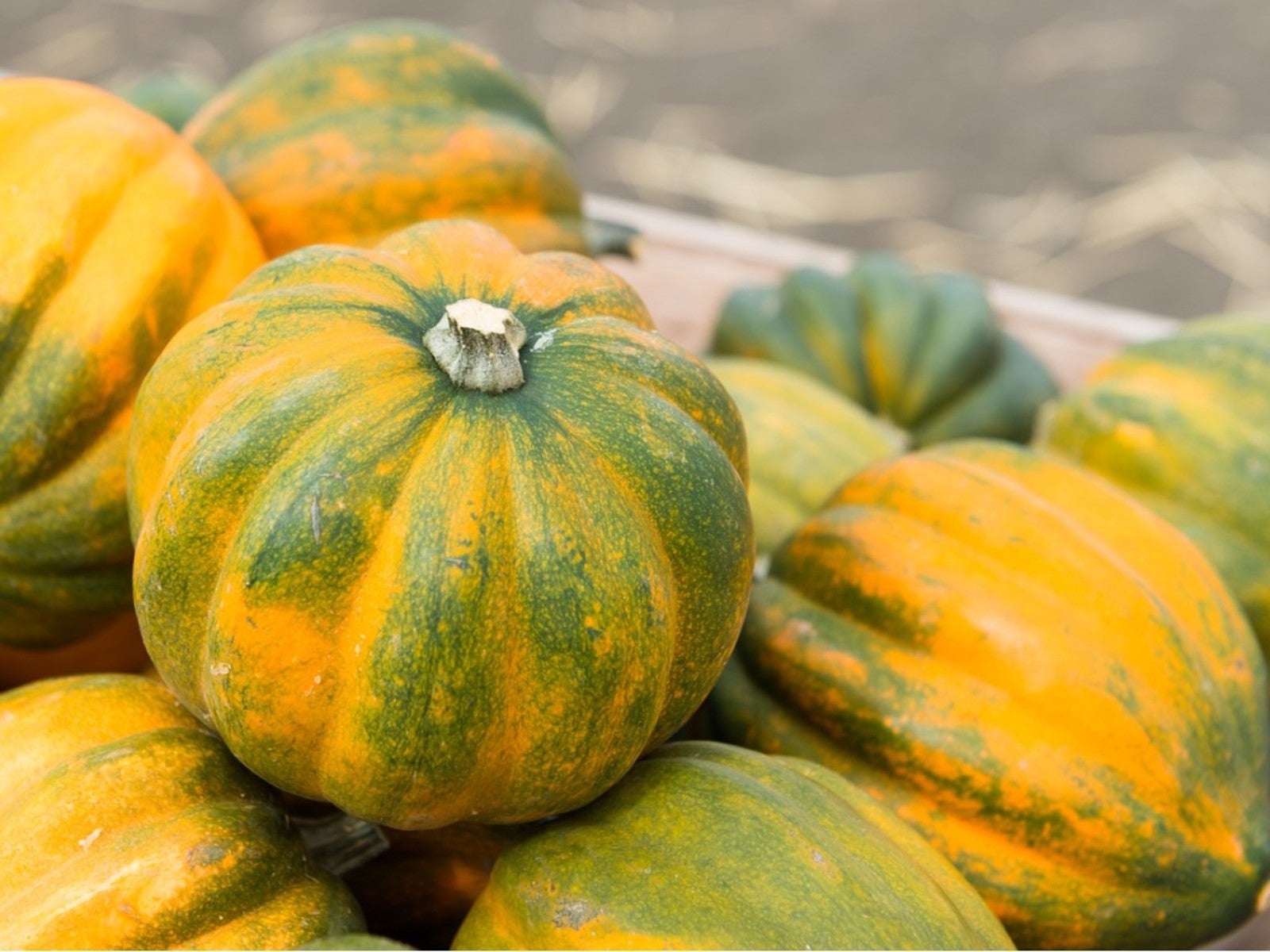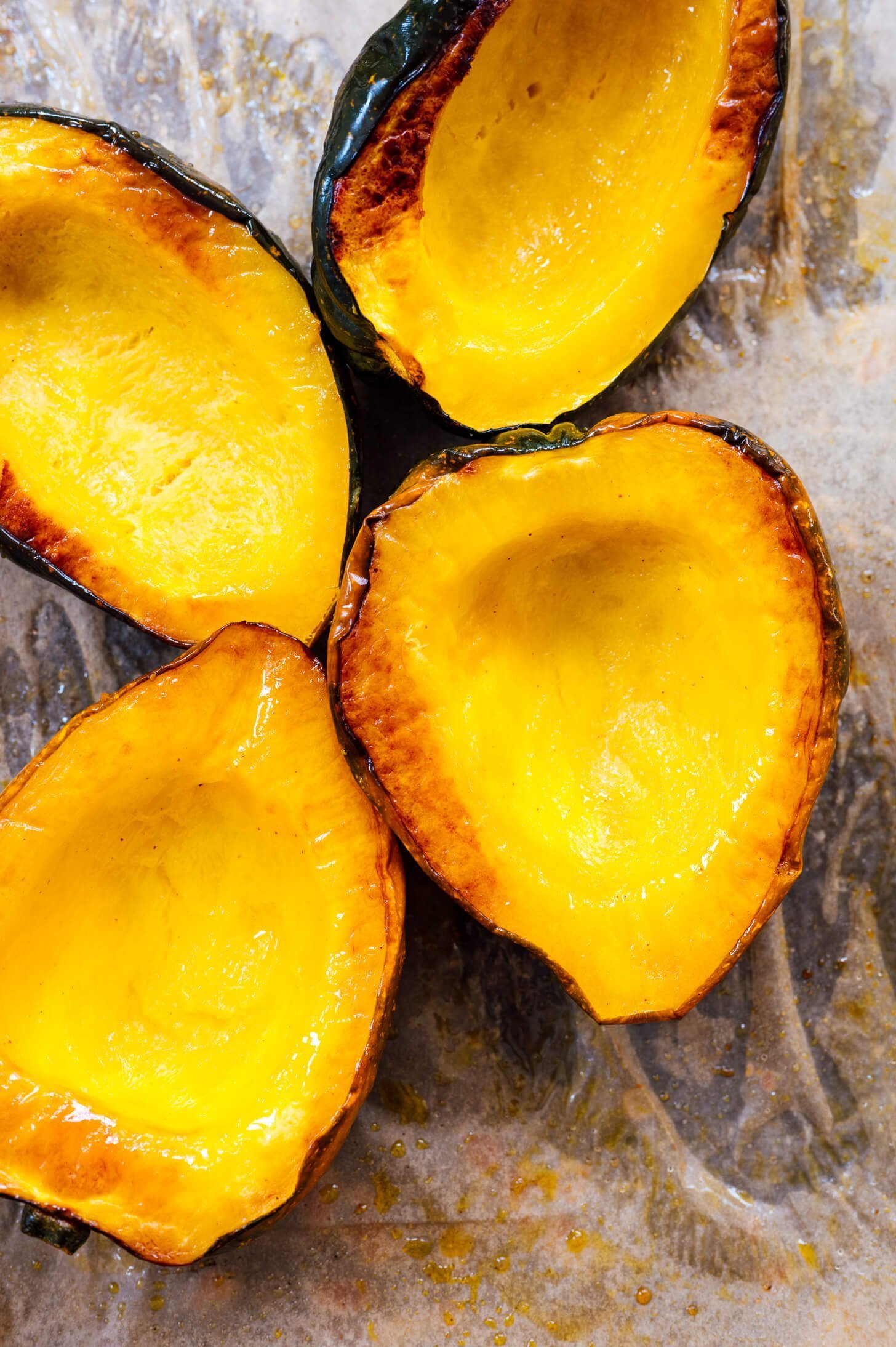Imagine standing in a bustling farmers market, surrounded by vibrant colors and the intoxicating aroma of freshly harvested produce. Amongst the variety of fruits and vegetables, your eyes rest upon a peculiar gourd-shaped vegetable, known as an acorn squash. Its smooth and ribbed outer skin showcases a striking palette of dark green, orange, and yellow hues. As your hands gently graze its firm surface, you feel the weight of this compact vegetable, which typically ranges from one to two pounds. Cutting it open reveals a tender orange flesh, with an inner cavity filled with seeds. This delightful squash, reminiscent of its namesake, captures both your curiosity and imagination as you eagerly contemplate its potential in your next culinary adventure.

Overview of Acorn Squash
Acorn squash is a winter squash that belongs to the Cucurbita genus. It is known for its distinctively shape and delicious taste. In this article, we will explore the various aspects of acorn squash, including its physical characteristics, internal structure, culinary uses, nutritional profile, storage guidelines, growing conditions, common variations, and frequently asked questions.
Description
Acorn squash is characterized by its small to medium size and unique shape. It is typically round or oblong, resembling an acorn, hence the name. The average size of an acorn squash ranges from 1 to 3 pounds, with the length measuring approximately 4 to 7 inches. The exterior skin is hard and ribbed, while the flesh inside is golden yellow or orange, depending on the variety.

Origin
The exact origin of acorn squash is not known, as it has been cultivated for hundreds of years and has been consumed by various cultures throughout history. However, it is believed to have originated in North and Central America, where it was a staple food for indigenous people. Acorn squash has since spread to other parts of the world and is now enjoyed globally for its sweet and nutty flavor.
Varieties
There are several varieties of acorn squash, each with its own unique characteristics. Some popular varieties include ‘Table Queen’, ‘Taybelle PM’, ‘Golden Acorn’, and ‘Sweet REBA Acorn’. These varieties differ in terms of taste, texture, and color, offering options for various culinary preferences.

Physical Characteristics
Size
Acorn squash typically ranges in size from small to medium. The average weight of a mature acorn squash is between 1 and 3 pounds, making it manageable to handle and cook.
Shape
The name “acorn squash” is derived from its distinct acorn-like shape. It is round or oblong, with a bulbous bottom end and a narrower top end. Its unique shape not only adds visual appeal but also makes it an ideal choice for stuffing.
Color
The color of an acorn squash varies depending on the variety. Common colors include dark green, yellow, and orange. The outer skin of the squash is usually dark green, gradually transforming into a vibrant golden or orange hue as it ripens. The flesh inside is consistently golden yellow or orange.
Texture
Acorn squash has a smooth and velvety texture when cooked. The flesh becomes tender and soft, making it easy to scoop out and enjoy.
Skin
The skin of acorn squash is hard and thick, providing excellent protection to the flesh inside. It is not typically consumed and is usually removed before cooking.
Ribs
One of the distinguishing features of acorn squash is its ribbed exterior. The ribs run vertically along the squash’s skin, creating a decorative pattern. The ridges not only add visual interest to the squash but also make it easier to grip and handle.
Stem
The stem of an acorn squash is woody and sturdy. It is usually left attached to the fruit until it is ready to be cooked or stored. The stem can be easily removed if desired.
Internal Structure
Flesh
The flesh of acorn squash is dense, smooth, and creamy when cooked. It has a sweet and slightly nutty flavor, which intensifies when roasted or baked. The color of the flesh can vary from pale yellow to vibrant orange, depending on the variety of squash.
Seeds
Similar to other squash varieties, acorn squash contains seeds. The seeds are typically oval-shaped and covered in a fibrous membrane. They can be removed and discarded or saved for roasting and consumption.
Cavity
The central hollow part of an acorn squash, known as the cavity, is where the seeds are found. The size of the cavity is relatively small compared to other winter squash varieties. It is important to remove the seeds and strings before cooking.

Harvesting and Ripeness
Harvest Time
Acorn squash is typically harvested in the fall, once the fruits have reached their mature size and color. The exact harvest time may vary depending on the growing conditions and the specific variety of squash. As a general rule, acorn squash is ready to be harvested when the skin is hard and cannot be easily punctured with a fingernail.
Ripeness Indicators
In addition to the skin’s hardness, there are a few other indicators of ripeness to consider when harvesting acorn squash. Look for a vibrant color on the exterior, indicating that the fruit has fully ripened. The stem should also be dry and brown, rather than green and moist. Thumping the squash with your finger should produce a hollow sound, indicating that it is mature and ready to be enjoyed.
Common Culinary Uses
Acorn squash is a versatile ingredient that can be used in a variety of culinary preparations. Here are some popular ways to enjoy acorn squash:
Baking
Baking acorn squash brings out its natural sweetness and creates a tender and creamy texture. Simply cut the squash in half, scoop out the seeds, and place the halves face down on a baking sheet. Bake at 400°F for approximately 45 minutes or until the flesh is soft and easily pierced with a fork.
Roasting
Roasting acorn squash is another delicious way to enjoy its flavors. Cut the squash into thin wedges, toss them in olive oil, and season with salt, pepper, and your favorite herbs or spices. Roast in a preheated oven at 425°F for about 25-30 minutes, or until the squash is golden and caramelized.
Stuffed Acorn Squash
Acorn squash’s shape makes it perfect for stuffing with various fillings. Cut the squash in half horizontally, scoop out the seeds, and fill the cavity with a mixture of grains, vegetables, and proteins. Bake in the oven until the filling is cooked and the squash is tender.
Soups and Stews
Acorn squash adds richness and depth to soups and stews. Diced or pureed acorn squash can be added to vegetable soups, chili, curry, or any other hearty dish. Its natural sweetness balances well with savory ingredients, creating a flavorful and satisfying meal.
Purees
Acorn squash can be easily pureed and used as a base for sauces, dips, spreads, or baby food. After roasting or steaming the squash, blend it until smooth and creamy. This puree can be incorporated into various recipes or enjoyed on its own.
Other Recipe Ideas
Acorn squash can also be used in salads, stir-fries, risottos, and even desserts. Its versatility allows for endless creative possibilities in the kitchen. Experiment with different flavor combinations and cooking methods to discover your favorite way to enjoy acorn squash.

Nutritional Profile
Acorn squash not only delights the taste buds but also offers several nutritional benefits.
Vitamins
Acorn squash is a rich source of vitamins A, C, and B6. Vitamin A is essential for maintaining healthy vision, immune function, and growth. Vitamin C is an antioxidant that boosts immunity and promotes healthy skin. Vitamin B6 supports brain function and helps the body produce energy.
Minerals
Acorn squash is packed with minerals such as potassium, magnesium, and manganese. These minerals play a crucial role in maintaining healthy blood pressure, strong bones, and a properly functioning metabolism.
Dietary Fiber
Acorn squash is a good source of dietary fiber. Fiber aids in digestion, promotes satiety, and helps regulate blood sugar levels. Incorporating acorn squash into your meals can contribute to a well-balanced and fiber-rich diet.
Calories
Acorn squash is relatively low in calories, making it a suitable choice for those watching their calorie intake. A 1-cup serving of cooked acorn squash contains approximately 115 calories, making it a filling and nutritious addition to any meal.
Health Benefits
The nutritional profile of acorn squash offers numerous health benefits. Regular consumption of acorn squash may help promote healthy digestion, support immune function, manage blood pressure, regulate blood sugar levels, and contribute to a well-rounded dietary pattern.
Storage and Shelf Life
Storage Guidelines
Acorn squash can be stored for several months when stored properly. The key to extending its shelf life is to keep it in a cool, dry, and well-ventilated area. Avoid exposing the squash to direct sunlight or excessive moisture, as this can cause premature spoilage. It is best to store acorn squash at temperatures between 50°F and 55°F.
Shelf Life
When stored under ideal conditions, acorn squash can stay fresh for up to 3 months. Regularly inspect the squash for any signs of rot or decay, and discard any damaged or spoiled specimens. If the stem becomes moldy or shriveled, it may indicate that the squash is no longer suitable for consumption.
Growing Acorn Squash
Planting
To grow acorn squash, select a sunny location in your garden with well-drained soil. Plant the seeds directly into the ground after the danger of frost has passed, typically in late spring or early summer. Sow the seeds about 1 inch deep and 3 feet apart, allowing sufficient space for the vines to spread.
Growing Conditions
Acorn squash thrives in warm and sunny climates. It requires a minimum of 6 hours of direct sunlight each day to ensure optimal growth. The soil should be fertile, loose, and well-draining. Regular watering is essential, especially during dry periods, to keep the soil consistently moist but not waterlogged.
Pollination
Acorn squash flowers are typically pollinated by bees and other insects. To encourage pollination, it is recommended to plant flowers that attract pollinators near your squash plants. If pollinators are scarce in your area, manual pollination can be performed by transferring pollen from male to female flowers using a small brush or cotton swab.
Pests and Diseases
While acorn squash is generally resilient, it can be susceptible to certain pests and diseases. Common pests that may affect acorn squash include squash bugs, cucumber beetles, and aphids. Regular monitoring and appropriate pest management techniques, such as handpicking or organic insecticides, can help prevent infestations. Diseases that can affect acorn squash include powdery mildew and downy mildew. Adequate air circulation, proper watering techniques, and disease-resistant varieties can mitigate the risk of diseases.
Harvesting
Acorn squash is typically ready for harvest 80 to 100 days after planting, depending on the variety and growing conditions. The squash is considered mature when the skin is hard and cannot be easily punctured with a fingernail. Use a sharp knife or pruners to cut the squash from the vine, leaving a short stem attached. Allow the squash to cure for a week or two in a dry and well-ventilated area before storage or consumption.
Common Variations of Acorn Squash
Golden Acorn Squash
Golden acorn squash is a popular variety known for its sweet and nutty flavor. It has a bright yellow exterior and golden orange flesh, which intensifies when cooked. Golden acorn squash is highly versatile and can be used in various culinary applications.
Sweet REBA Acorn Squash
The Sweet REBA acorn squash is a recent variety developed specifically for its sweet flavor. It has a dark green skin and vibrant orange flesh. This variety is particularly beloved for its exceptional taste and smooth texture.
Taybelle PM Acorn Squash
The Taybelle PM acorn squash is a relatively new hybrid variety. It features a dark green skin with a distinct ribbed texture and vibrant yellow flesh. The Taybelle PM acorn squash is prized for its sweet flavor and tender flesh.
FAQs about Acorn Squash
How long does it take for an acorn squash to grow?
Acorn squash typically takes between 80 and 100 days to reach maturity from the time of planting. However, the exact growth time can vary depending on various factors such as climate, growing conditions, and the specific variety of squash.
Can you eat the skin of an acorn squash?
Although the skin of acorn squash is technically edible, it is typically removed before cooking or consuming. The skin is hard and tough, and the flesh inside is much more desirable in terms of taste and texture.
What other types of squash are similar to acorn squash?
Butternut squash and delicata squash are two varieties that are often considered similar to acorn squash. They share some common characteristics, such as a sweet flavor and a dense flesh, making them suitable substitutes in many recipes.
Can you freeze acorn squash?
Yes, acorn squash can be frozen. To freeze acorn squash, it is best to first cook it by roasting or steaming. Allow the cooked squash to cool, then remove the skin and seeds. Cut the flesh into desired portions, and place them in airtight freezer bags or containers. Properly stored, frozen acorn squash can last for up to 12 months.
Are acorn squash seeds edible?
Yes, acorn squash seeds are edible. They can be roasted, salted, and enjoyed as a tasty and nutritious snack. However, they may be more fibrous compared to seeds from other squash varieties, so some prefer to remove the seeds or use them for other purposes.



